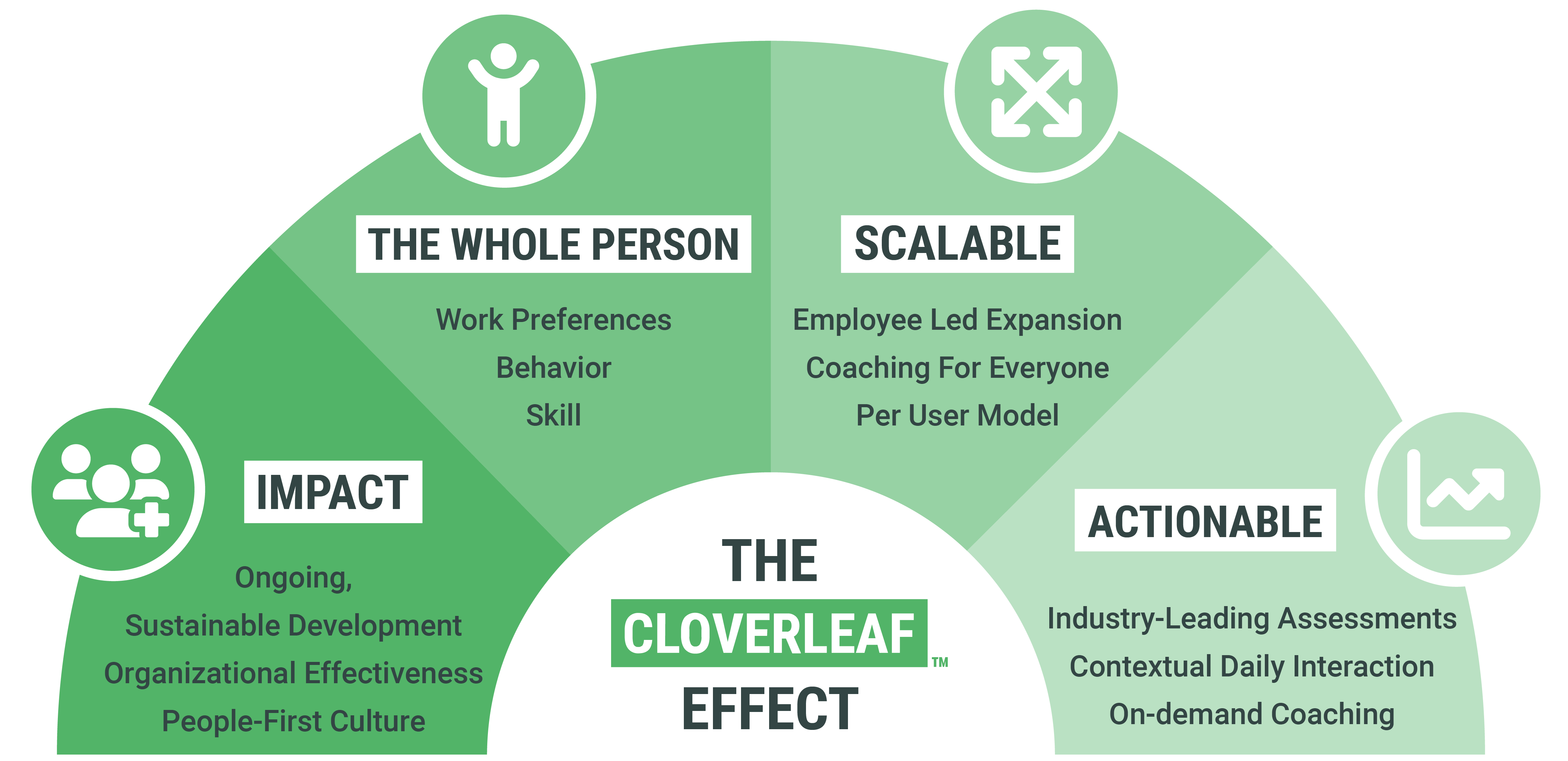The role of Learning and Development (L&D) is undergoing a significant transformation. No longer just a support function, L&D is becoming a critical strategic partner, essential for navigating the complexities of today’s workforce. During a recent webinar hosted by Cloverleaf, industry experts discussed these changes, addressing both the challenges and innovative solutions within modern L&D practices.
During the webinar, Stephanie Licata, Senior Learning Strategist at Cloverleaf, framed the discussion: “We’re really here to talk about how do we transform how L&D is perceived, how it’s leveraged, how we think about it, how stakeholders think about it, and how we can really help organizations leverage it as that competitive edge.”
This statement underscores the evolving perception of L&D from a cost center to a catalyst for organizational success. The discussion highlighted the critical nature of integrating L&D strategies seamlessly into business operations, emphasizing that effective L&D practices can significantly influence a company’s competitive position by enhancing workforce capabilities and fostering a culture of continuous improvement and innovation.
In this post, we explore key insights that are shifting the perception of L&D’s role and examine how to transform learning and development into a powerful lever for business growth and employee development.

L&D Can Be A Strategic Investment Not A Cost Center For Organizations
L&D is transitioning from its traditional training function to a strategic investment within organizations. L&D needs to be seen not just as a training ground but as a pivotal engine driving the business forward. This evolution reflects a broader recognition of L&D’s potential to not only improve individual performance but also to drive organizational growth and adaptability.
Another significant takeaway is the integration of L&D into the very fabric of company culture. By making learning a core aspect of organizational life, companies can unlock the full potential of their employees. This integration helps in cultivating a workforce that is continuously evolving, adaptable, and aligned with the company’s long-term strategic goals. When L&D is woven into daily operations, it becomes a natural part of progress.
Automated Coaching™ supports this perspective because it embeds learning into the very fabric of one’s work, ensuring that L&D initiatives are directly tied to achieving business goals.
You’ve probably built and bought tons of content, but translating it all to your team, particularly managers can be challenging. Automated Coaching™ provides real-time support: just start asking questions… ‘How do I resolve conflict with [name]?’ and receive instant, personalized advice to navigate challenging moments. Leaders need more effective ways to ensure that the valuable information shared during training sessions becomes applicable and available at the moment it is needed, specific to a team member’s context. Automated coaching does this.

HUMAN SKILL PROGRAMS ARE HITTING LIMITATIONS...
- Close the widening gap between learning and on-the-job application
- Overcome the tension of pausing productivity for development opportunities
- Integrate learning so it is actually in the flow of work
- The evolution of human skill development
- What Automated Coaching™ is and how it works.

3 Significant Challenges in Traditional L&D Approaches
The traditional “one-size-fits-all” model of L&D often fails to address the diverse needs of each employee, leading to suboptimal outcomes and wasted resources. A lack of personalization and scalability in conventional learning programs can significantly hinder their effectiveness and impact. Current methods often fall short due to several inherent limitations:
1. Lack of Personalization Traditional training programs often employ one-size-fits-all approaches because development leaders simply cannot be everywhere at once or provide content that is unique for each person and specific to their context.
2. Limited Scalability As organizations grow and become more global, scaling L&D initiatives to meet diverse and evolving needs becomes increasingly challenging without the right technology and strategy in place. Not to mention, development becomes costly when you consider providing it beyond a small group of leaders.
3. Loss Of Relevancy If training is confined to specific times or opportunities it loses relevancy. Learning and development must be accessible so that it is not dependent upon schedules and can happen in the flow of work.
L&D must move beyond traditional training methods that always requires removing people and overloading them with content and instead look at ways to embed learning directly into the flow of work.
Cloverleaf’s Response to these L&D Challenges
Business leaders keep asking learning professionals the same questions over the years.
Are we getting good value from investment in training?
Which type of training is the most effective?
How can we improve current learning and development programs?
What additional learning support do our teams need?
To answer these recurring questions, leaders need data that reveals the tangible impact of your L&D initiatives to demonstrate how tailored learning strategies can deliver measurable improvements in employee performance, organizational efficiency, and ROI.

Contextual Microlearning
Cloverleaf challenges the traditional “one-size-fits-all” approach by focusing on personalized microlearning that is available and according to what an individual needs. Integrating learning into daily workflows helps ensure that it’s not only relevant but also perfectly timed to meet immediate business challenges. This means every learning instance is directly beneficial.
Automated Coaching Scales
Automated Coaching technology transforms coaching into a resource accessible for all employees, not just executives. It democratizes the learning process, making it possible to extend personalized coaching across entire organizations, regardless of geographical and functional barriers.
Continuous Learning Embedded in the Flow of Work
Embedding learning directly into the workflow, ensures that it becomes a seamless aspect of one’s daily activities. Sporadic or even scheduled training sessions struggle to make learning actionable; Automated Coaching integrates learning with the work itself, making it continuous and immediate. Doing so significantly enhances the agility and responsiveness of our workforce.
Proof of Impact
Cloverleaf helps reinforce this approach by using data to measure the effectiveness of learning interventions. In addition to metrics like completion surveys, it’s about capturing data that truly matters to businesses, such as improvements in behavior and job performance that deliver tangible impact on business results.
Forward-thinking organizations need to create environments that embrace and unlock the potential of the whole employee. Doing so requires embedding L&D into the fabric of the culture, transforming learning from a peripheral activity into a core strategic asset. During the Cloverleaf webinar, insights were shared on how effectively this can be achieved.
Weaving L&D into Company Culture with Cloverleaf
Organizations must create environments that express the intention to embrace and unlock the potential of the whole employee. People are not their roles. People are not their titles. People are not their skills. People are not their assessment results. They are whole human beings.
This perspective underscores the need for a holistic approach to employee development, one that goes beyond traditional training and development methods. Kim Crean, a panelist during the webinar, emphasized the strategic role of L&D in shaping company culture:
The most effective strategy that I’ve had in any organization is challenging our leadership to consider L&D as their partner. So I consider it like a hub and spoke kind of situation. L&D being the hub and the spoke driving to all those various strategies, either business priorities or workforce transformation, Crean explained.
This approach is not only about including L&D in the strategic conversation but making it a central part of how the company operates day-to-day. Crean further elaborated on how this integration happens in practice:
Typically, what I’ve done in many organizations is a listening tour of what we currently have and if there is something that we can either repurpose or reuse. This is the time it’s going to take for us to make that happen. Then these are the steps and skills that we’re going to get out of it. So, really being able to have a full training needs analysis of what it is that we need so that we can be engaged with our senior leaders on why we are not just a cost center. We are not just here to support you, but really partner with you on what you need today, what you need for your future.
The strategic placement of L&D within company culture has transformative effects. By weaving learning directly into the operations, it ensures it’s not just an afterthought but a fundamental component of our strategy. This integration enables a culture where continuous improvement is the norm, not the exception. Crean’s insights highlight the importance of viewing L&D as an integral business partner, shaping a culture of continuous development and readiness for future challenges.
Maintaining Agility and Responsiveness with Learning Solutions
To stay agile and responsive when the market changes, when economic shifts and technology comes on and changes everything, L&D can be this seed that you plant while creating the right environment around it for it to sprout and flourish and produce fruit in time, another panelist, Sotus Pulimenos a Global Talent Best Practices Leader stated. The key is to have learning professionals in the right positions to proactively bridge gaps and be forward-thinking in their approach to workforce development.
It’s about embedding learning and development so deeply that it becomes a part of the regular business rhythm and not something that Talent Leaders scramble to update or adapt when external pressures demand it.
Unlike traditional L&D programs that pull employees out of their work environment, Cloverleaf ensures learning is part of the daily routine. This method eliminates the common disconnect between learning and application, making development ongoing and directly relevant to each individual’s tasks and challenges. Automated Coaching empowers employees to apply learning in real-time, so that learning has a direct impact on their current projects and challenges.
Empowering L&D to Drive Strategic Impact Today
Transforming Learning and Development from a peripheral support function to a central strategic asset requires a profound shift in how L&D is perceived and implemented within organizations. Progressive leaders recognize that L&D is a pivotal force in driving business growth because of its ability to strengthen employee competencies that actually impact organizational success.
Using data-driven learning through Automated Coaching ensures that L&D initiatives are both impactful and directly tied to the real-time business needs of people, helping keep the workforce agile and responsive to the dynamics in the workplace that accelerate or slow work.
By redefining the role of L&D and embedding it deeply within company culture, organizations can better prepare for the complexities of working together and draw out the full potential of their human resources.



